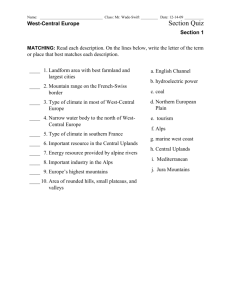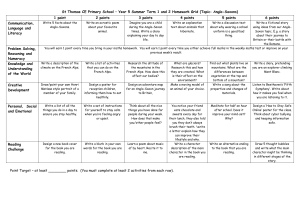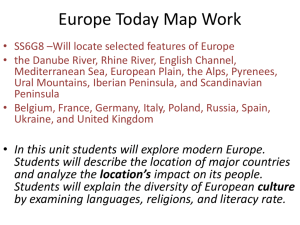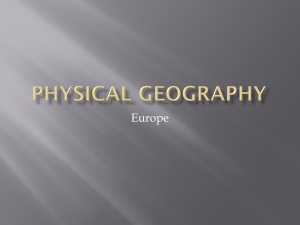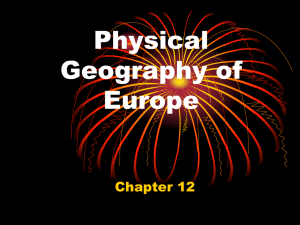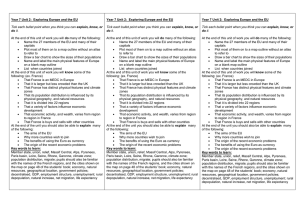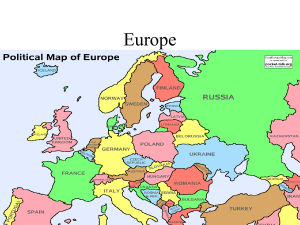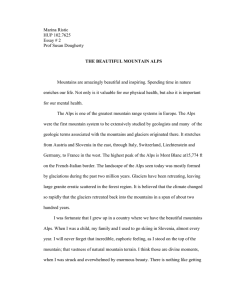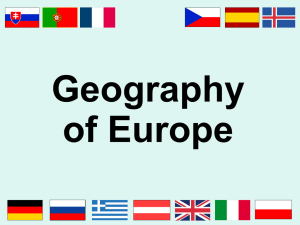Time 1
advertisement
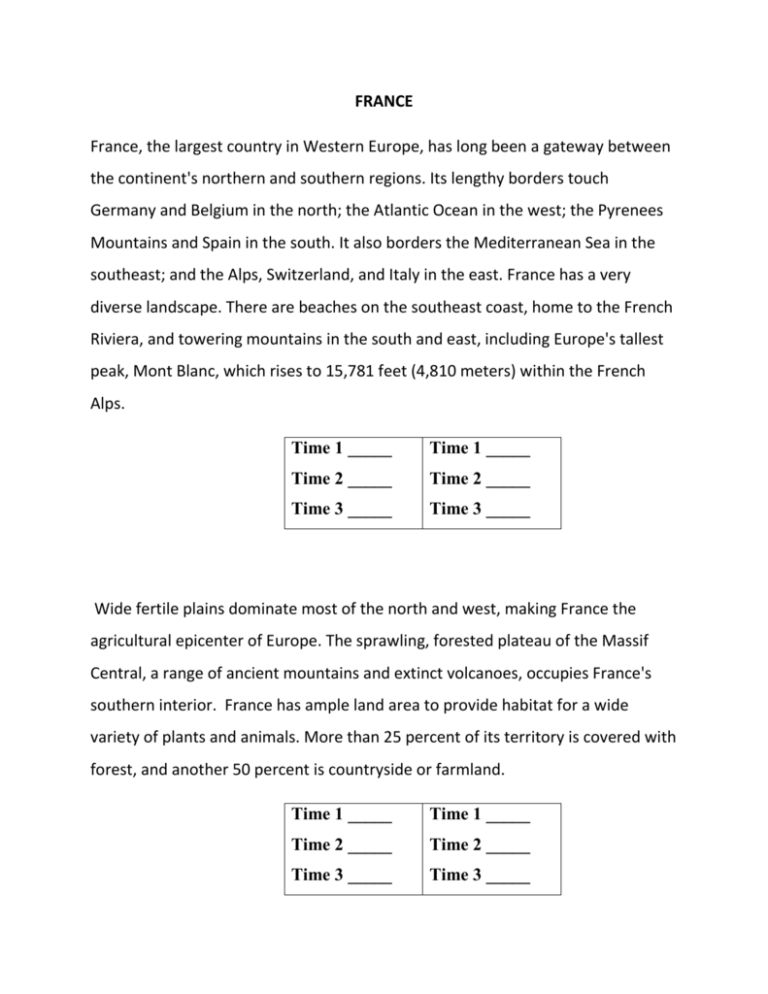
FRANCE France, the largest country in Western Europe, has long been a gateway between the continent's northern and southern regions. Its lengthy borders touch Germany and Belgium in the north; the Atlantic Ocean in the west; the Pyrenees Mountains and Spain in the south. It also borders the Mediterranean Sea in the southeast; and the Alps, Switzerland, and Italy in the east. France has a very diverse landscape. There are beaches on the southeast coast, home to the French Riviera, and towering mountains in the south and east, including Europe's tallest peak, Mont Blanc, which rises to 15,781 feet (4,810 meters) within the French Alps. Time 1 _____ Time 1 _____ Time 2 _____ Time 2 _____ Time 3 _____ Time 3 _____ Wide fertile plains dominate most of the north and west, making France the agricultural epicenter of Europe. The sprawling, forested plateau of the Massif Central, a range of ancient mountains and extinct volcanoes, occupies France's southern interior. France has ample land area to provide habitat for a wide variety of plants and animals. More than 25 percent of its territory is covered with forest, and another 50 percent is countryside or farmland. Time 1 _____ Time 1 _____ Time 2 _____ Time 2 _____ Time 3 _____ Time 3 _____ Lowland forests are home to deer and wild boar, while the woodlands of the Alps and Pyrenees provide refuge for rare chamois antelope, ibex, brown bears, and alpine hares, among many other species. The Mediterranean coastline is a stopover of millions of migrating African birds, including flamingos, vultures, egrets, and bee-eaters. The French government has made a broad commitment to preserving open spaces and the wildlife they contain. About 10 percent of the country has been set aside as national or regional parklands and nature reserves. Time 1 _____ Time 1 _____ Time 2 _____ Time 2 _____ Time 3 _____ Time 3 _____ France is one of the oldest nations on Earth and the most ethnically diverse country in Europe. These deep and broad influences have made France a world leader throughout history in nearly all aspects of culture, including cuisine, winemaking, politics, philosophy, music, art, film, fashion, literature, and sports. France is among the world's largest economies. The country produces many items that other countries buy, including its most famous products: wine and cheese. Other exports include automobiles, electronics, and clothing. Tourism is also a huge industry in France. Some 75 million people visit the country every year, more than any other country. Time 1 _____ Time 1 _____ Time 2 _____ Time 2 _____ Time 3 _____ Time 3 _____ Julius Caesar established full Roman control over Gaul in 51 B.C., but by 400 A.D., Rome was in decline. Gaul was attacked by neighboring tribes, including Visigoths, Vandals, and the Germanic Franks, from which France would eventually get its name. In 843 a treaty created the territory of West Francia, which would later become France. Over the next thousand years, West Francia was ruled by a series of powerful kings. Time 1 _____ Time 1 _____ Time 2 _____ Time 2 _____ Time 3 _____ Time 3 _____ Several wars were fought over who would rule France, including the Hundred Years War, from 1337 to 1453. In 1789, a violent period of change called the French Revolution began, eventually ending in the overthrow of the monarchy. Napoleon Bonaparte, a general during the French Revolution, declared himself leader of France in 1799 and began a campaign of wars with the country's neighbors. He was defeated at the Battle of Waterloo in 1815. France later suffered great losses in both World War I and World War II. It has since emerged, though, as an important and prosperous world power. Time 1 _____ Time 1 _____ Time 2 _____ Time 2 _____ Time 3 _____ Time 3 _____
